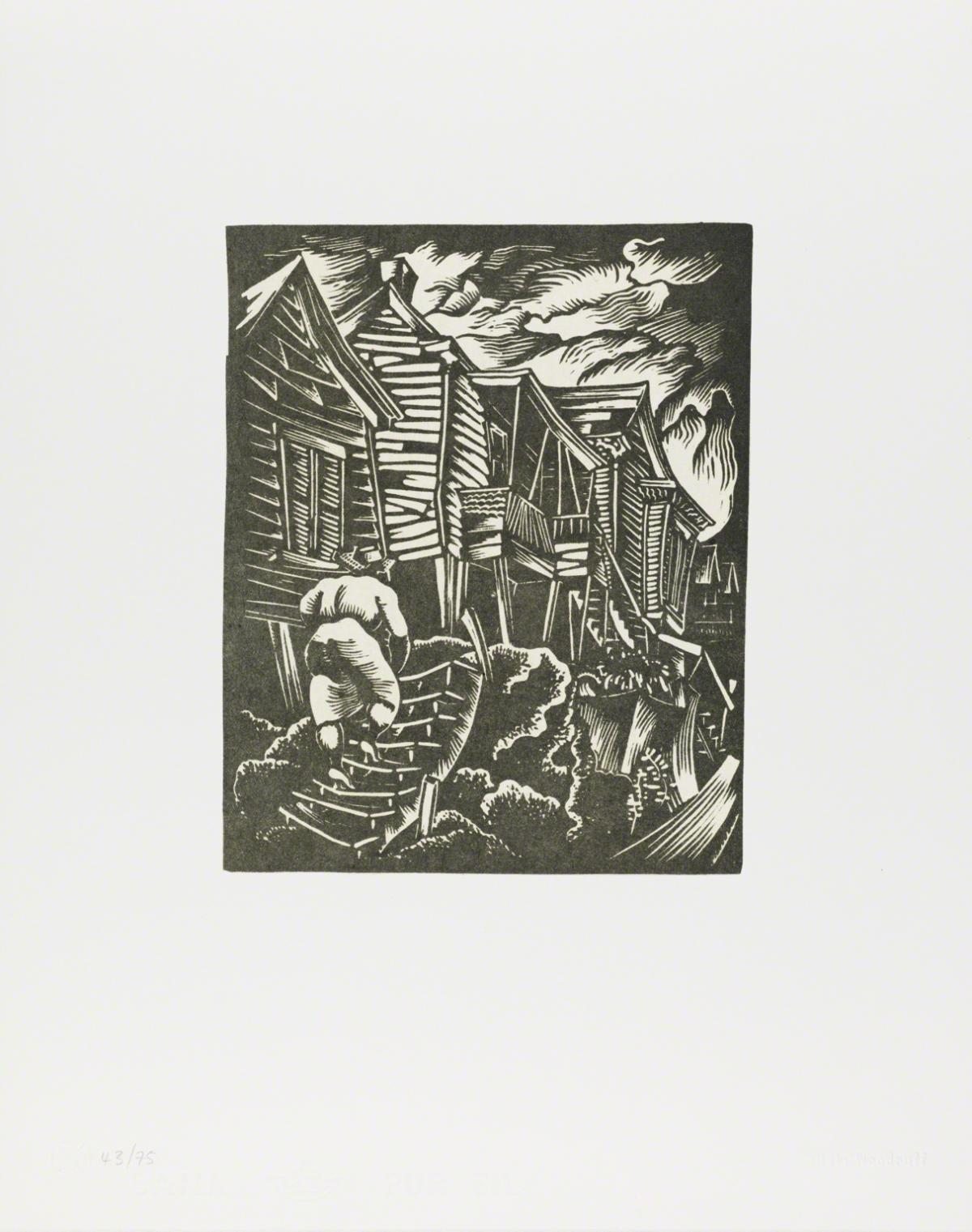Returning Home
Hale Woodruff ( 1931-46 (printed 1996) )

Hale Woodruff’s Atlanta Portfolio is at once inspired by his experiences in the Deep South and universal in its scope and enduring meaning in our twenty-first-century world. Comprising eight linocuts that the artist made during his years heading up the art department at Atlanta University, the portfolio is notable for addressing the poverty and toils of everyday African American life in the South during the 1930s. That Woodruff chose to focus two of the prints on scenes of lynching is significant. His works answered a call from Walter White, executive director of the National Association for the Advancement of Colored People (NAACP), who was putting together an exhibition explicitly aimed at raising awareness and support in favor of an antilynching bill awaiting passage in Congress.[1] At a time when lynchings were at a record high, the Costigan-Wagner bill, named for its sponsors Sen. Edward P. Costigan (R-CO) and Sen. Robert F. Wagner (R-NY), brought renewed attention and urgency to a form of racial terror that had persisted long since the end of slavery.
Woodruff honed his graphic abilities and skillful command of line and patterns of dark and light as a political cartoonist at the Indianapolis Edge, where he got his start while pursuing his studies at the nearby John Herron Art Institute. In Giddap and By Parties Unknown, we see the fruits of the artist’s incisive eye and hand in creating scenes that cut to the heart of an emotional subject. In one—Giddap—we bear witness alongside the spectators to a lynching that is about to unfold. In the other—By Parties Unknown—we see its painful aftermath in the lifeless body left on the steps of a run-down church. Woodruff’s depictions evoke at once suffering and redemption, as Helen Langa has suggested.[2]
The deep pathos emanating from the slumped figure on the foot of the church steps in By Parties Unknown calls to mind a panel in Jacob Lawrence’s Migration Series. In panel 15, Lawrence symbolizes the painful absence of the victim through an empty noose dangling from a tree branch with a crouched figure in mourning nearby. Lawrence’s view of lynching shows its earlier manifestation as a leading cause of the Great Migration.[3] Images such as these remind us of the legacy of lynching in the form of hate crimes today. It took a century, and over two hundred attempts, for Congress to pass two federal anti-lynching bills.[4] Upon the Senate bill’s passage, its champion, Cory Booker, noted, “Today, we have…taken corrective action that recognizes this stain on our country’s history.”[5]
1. These were among 49 works by 37 artists included in An Art Commentary on Lynching, Arthur U. Newton Galleries, New York, February 15–March 2, 1935.
2. Helen Langa, “Antilynching: Art Exhibitions: Politicized Viewpoints, Racial Perspectives, Gendered Constraints,”
3. Panel no. 15: Another cause was lynching. It was found that where there had been a lynching, the people who were reluctant to leave at first left immediately after this. (Original 1941 caption.)
4. The Senate passed their Justice for Victims of Lynching Act on December 19, 2018, and the House passed H.R. 35, The Emmett Till Anti-Lynching Act on February 26, 2020. At the time of writing, Congress has yet to reconcile the two versions, leaving the fate of a federal anti-lynching bill uncertain. The founding in 2018 of the National Memorial for Peace and Justice, in Montgomery, Alabama, marks the first national memorial to honor the victims of lynching and slavery.
5. Cory Booker, cited in Louis P. Masur, “Why it took a century to pass an anti-lynching law,” Washington Post, December 28, 2018.